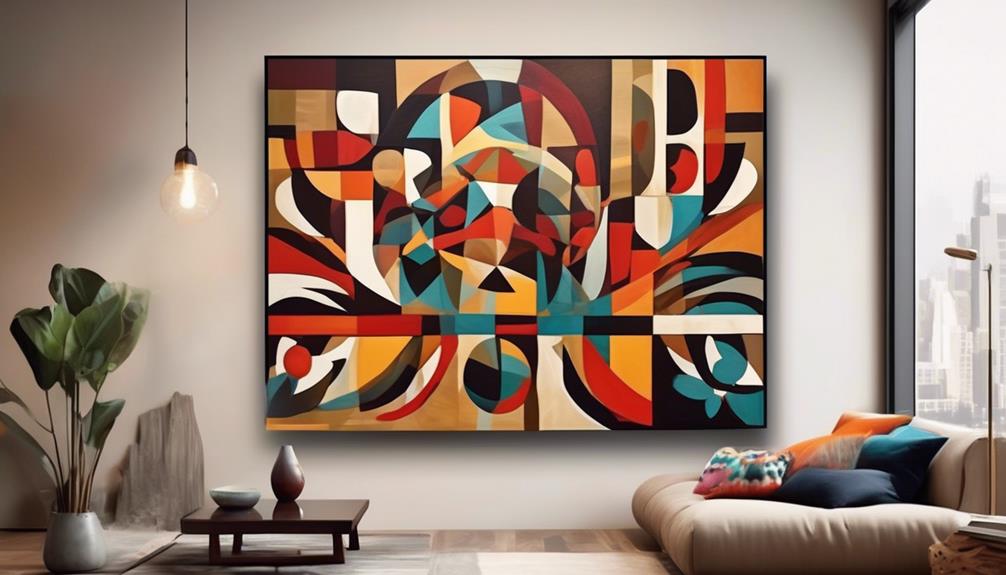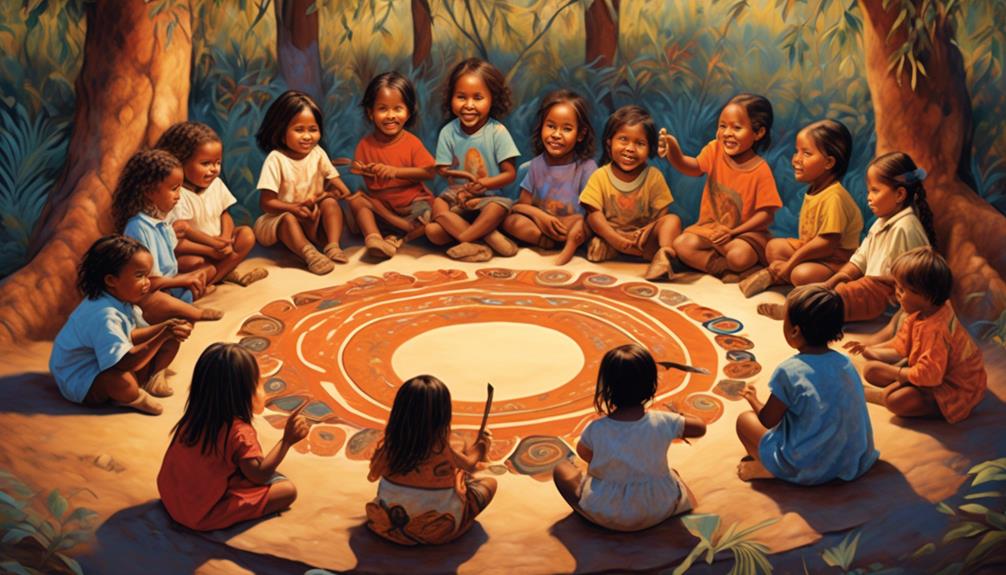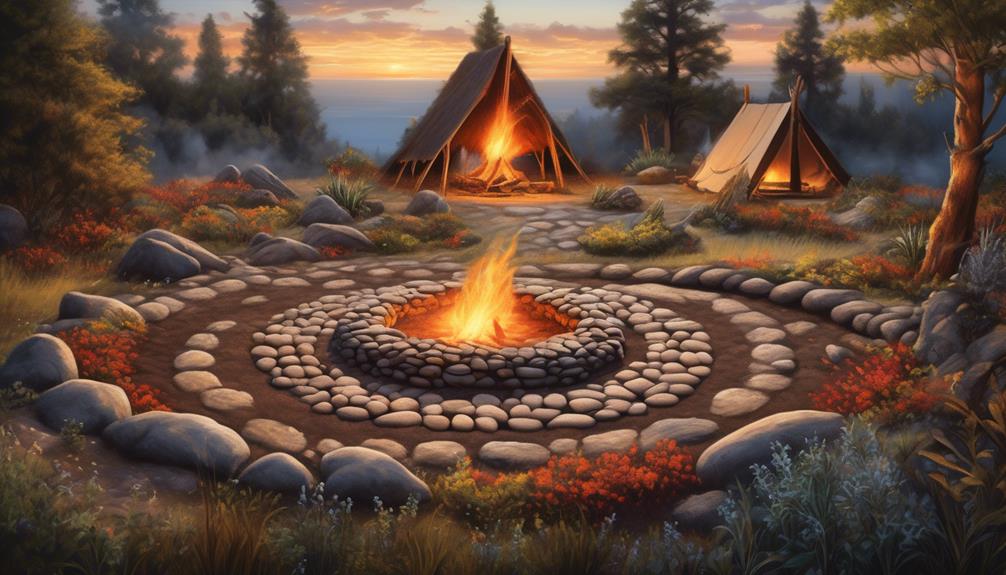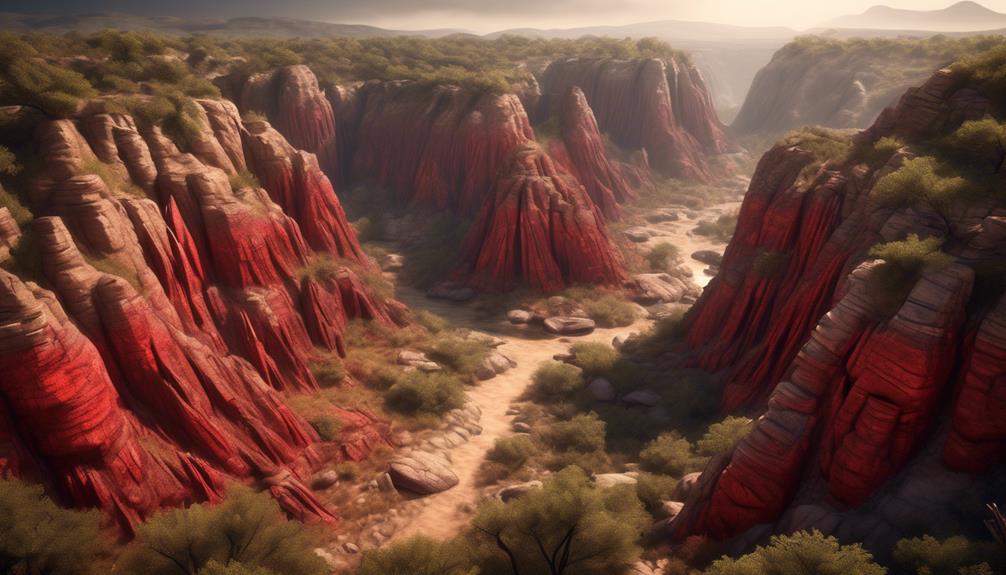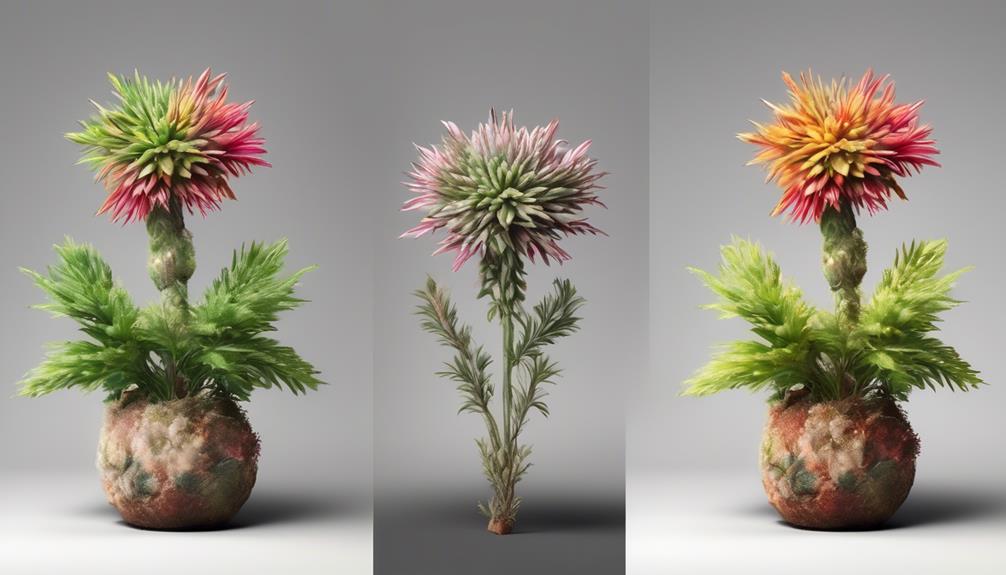When thinking about Indigenous art, the intricate dot paintings created by Aboriginal Australians often come to mind.
However, there is a vast world of Indigenous art waiting to be explored.
From the symbolism and meaning in traditional art forms to the incorporation of textiles and weaving, there are endless possibilities to consider.
As we delve into this discussion, we will uncover the rich techniques and materials used in Indigenous art, as well as how contemporary artists are reimagining and revitalizing these ancient forms of expression.
Key Takeaways
- Indigenous art forms encompass a wide range of traditional practices such as dot paintings, beadwork, quillwork, pottery, carving, and basketry.
- Symbolism and meaning play a significant role in Indigenous art, often drawing inspiration from the natural world, spiritual beliefs, ancestral connections, and cultural teachings.
- Indigenous textiles and weaving are important aspects of Indigenous art, allowing for the expression of cultural richness, distinct stories, and preservation of ancestral heritage.
- Indigenous art techniques utilize natural pigments, bark paintings, carving, and pottery, reflecting deep-rooted connections to the land, heritage, and spirituality.
Traditional Indigenous Art Forms
Traditional Indigenous art forms encompass a rich and diverse array of creative expressions that have been passed down through generations. These art forms hold immense cultural significance, reflecting the traditions, beliefs, and stories of Indigenous communities.
From intricate beadwork to stunning quillwork, each art form carries deep cultural meaning, often representing spiritual connections to the land, animals, and ancestors. The use of vibrant colors and intricate patterns in Indigenous art forms serves as a reflection of the interconnectedness of all living beings in the natural world.
Through art, Indigenous communities preserve their heritage, language, and traditional knowledge, ensuring the continuation of their rich cultural legacy.
Moreover, Indigenous art forms aren't merely decorative; they often hold ceremonial and spiritual importance within the community. These art forms are deeply rooted in rituals, dances, and storytelling, playing a vital role in passing down cultural teachings and values.
Symbolism and Meaning in Indigenous Art
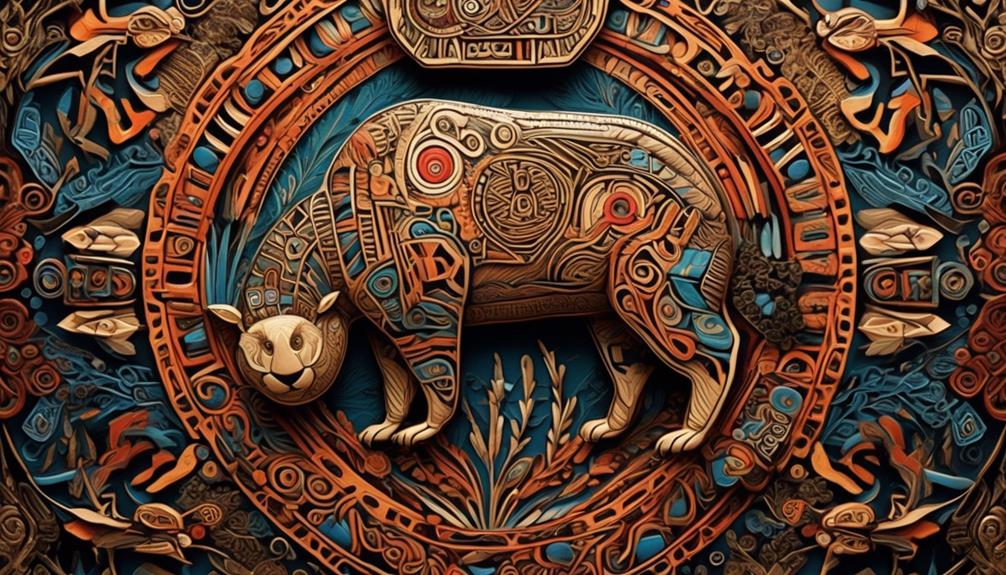
Symbolism and meaning in Indigenous art often intertwine with the natural world, spiritual beliefs, and ancestral connections, conveying profound cultural significance. Indigenous artworks are rich in symbolism, each element carrying deep cultural and spiritual meanings.
Here are three key aspects of symbolism and meaning in Indigenous art:
- Natural World: Indigenous art frequently incorporates symbols representing elements of the natural world such as animals, plants, and celestial bodies. These symbols often reflect the interconnectedness between Indigenous communities and the environment, portraying their deep reverence for nature and the significance of living in harmony with the earth.
- Spiritual Beliefs: Many Indigenous artworks are imbued with symbols that hold spiritual significance, depicting concepts like creation, transformation, and the spirit world. These symbols serve as a visual language through which spiritual beliefs, rituals, and cosmology are communicated, offering insight into the profound spirituality of Indigenous cultures.
- Ancestral Connections: Indigenous art often includes symbols that honor and celebrate ancestral connections, depicting lineage, heritage, and the wisdom passed down through generations. These symbols reinforce the continuity of Indigenous traditions and the enduring presence of ancestors within contemporary Indigenous communities.
Understanding the symbolism and meaning in Indigenous art is essential for appreciating the depth and cultural significance of these artistic traditions.
Incorporating Indigenous Textiles and Weaving
Incorporating Indigenous textiles and weaving enhances the depth and cultural richness of artistic traditions, fostering a profound connection to ancestral heritage and craftsmanship. Textile traditions hold significant cultural and historical value, reflecting the distinct stories, beliefs, and experiences of Indigenous communities. Weaving techniques, passed down through generations, showcase intricate patterns and symbolic motifs that represent a deep understanding of the natural world and spiritual beliefs.
By integrating Indigenous textiles and weaving into contemporary art forms, we honor the resilience and creativity of Indigenous peoples. The vibrant colors and unique textures of traditional textiles offer a powerful means of storytelling, celebrating identity, and preserving cultural legacies. Through this incorporation, we not only pay homage to the artistry of Indigenous communities but also support sustainable practices and economic empowerment.
Exploring Indigenous textiles and weaving techniques provides a gateway to understanding the complexities of Indigenous artistry. It invites a profound appreciation for the skill, patience, and spiritual significance embedded in each woven masterpiece, fostering a deeper connection to the diverse cultural tapestry of Indigenous peoples.
Indigenous Art Techniques and Materials
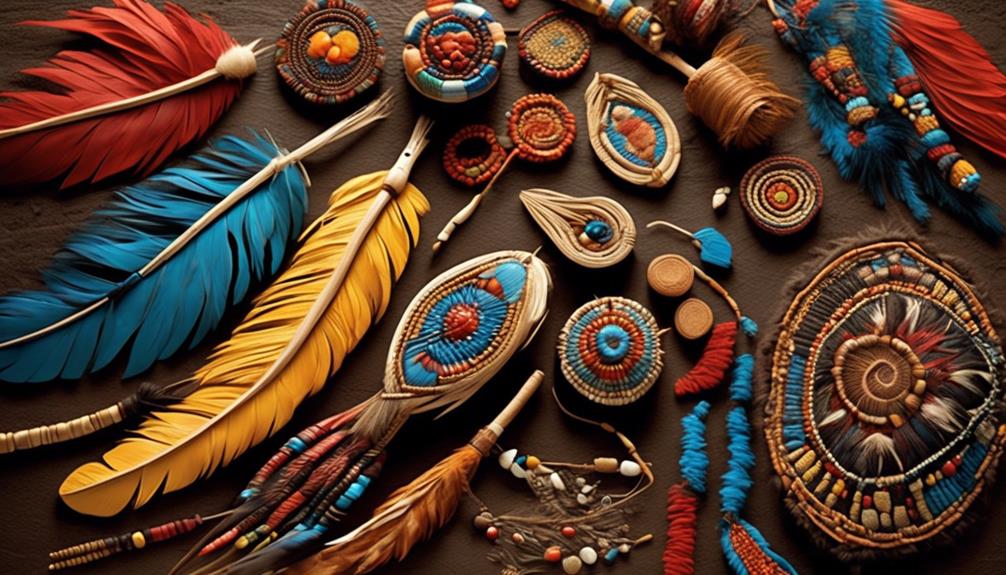
Exploring the diverse techniques and materials utilized in Indigenous art offers a profound insight into the cultural richness and artistic expressions of Indigenous communities. Indigenous art is deeply rooted in tradition and spirituality, and the techniques and materials used play a significant role in portraying the stories and histories of the Indigenous peoples.
Here are three key elements that contribute to the depth and complexity of Indigenous art:
- Natural Pigments: Indigenous art often utilizes natural pigments sourced from the surrounding environment. These pigments are derived from plants, minerals, and clays, and their vibrant colors hold symbolic meanings within Indigenous cultures. The use of natural pigments connects the artwork to the land and reflects the deep relationship Indigenous peoples have with their environment.
- Bark Paintings: A traditional form of Indigenous art, bark paintings involve the use of tree bark as a canvas. The intricate designs and symbols depicted on the bark tell stories of creation, land, and ancestral knowledge. This technique has been passed down through generations, preserving Indigenous narratives and cultural heritage.
- Traditional Carving and Pottery Techniques: Indigenous art often incorporates intricate carving and pottery techniques, showcasing exceptional craftsmanship and attention to detail. From wooden masks to clay vessels, these techniques are used to create art that represents Indigenous identity and traditions, often depicting spiritual beliefs and ancestral connections.
The utilization of these techniques and materials underscores the profound cultural significance of Indigenous art, reflecting the deep-rooted connections to land, heritage, and spirituality.
Contemporary Interpretations of Indigenous Art
The rich heritage and artistic traditions of Indigenous communities continue to inspire contemporary interpretations of Indigenous art, fostering a dynamic evolution that resonates with cultural depth and creativity. Modern influences have brought new perspectives and techniques to traditional Indigenous art, resulting in a fusion of old and new that captivates audiences worldwide. This harmonious blend of tradition and innovation reflects the resilience and adaptability of Indigenous cultures, ensuring their art remains relevant in today's society.
| Modern Influences | Cultural Preservation |
|---|---|
| Incorporation of digital media and technology | Emphasis on traditional storytelling and symbolism |
| Exploration of new materials and unconventional methods | Commitment to passing down artistic knowledge through generations |
| Collaboration with non-Indigenous artists for cross-cultural exchange | Efforts to reclaim and revitalize lost art forms and practices |
| Representation of contemporary social and political issues | Adherence to cultural protocols and respect for sacred symbols |
| Integration of global artistic trends with Indigenous aesthetics | Promotion of Indigenous art as a means of cultural expression and identity |
These contemporary interpretations not only showcase the diversity and innovation within Indigenous art but also serve as a powerful means of cultural preservation, ensuring that the legacy of Indigenous artistic traditions endures for generations to come.
Frequently Asked Questions
How Can Non-Indigenous People Respectfully Engage With and Appreciate Indigenous Art?
Respecting indigenous art involves understanding cultural appropriation and ethical engagement.
It's crucial to engage in art education and cross-cultural dialogue. By learning about the history and significance of indigenous art, we can appreciate it in a respectful manner.
Supporting indigenous artists and organizations, seeking permission and understanding the cultural context are vital.
We strive to engage with indigenous art respectfully and honor its cultural significance.
Are There Specific Protocols or Ceremonies Associated With Creating Indigenous Art?
There are specific protocols and ceremonies associated with creating indigenous art, reflecting the cultural significance and artistic expression.
These practices are deeply rooted in tradition and hold great importance within indigenous communities. They encompass a wide range of rituals, from gathering materials with respect to honoring ancestral knowledge through storytelling and song.
The entire process is a profound and meaningful experience that embodies the rich heritage and spiritual connection to the land.
What Role Do Elders and Traditional Knowledge Holders Play in the Creation and Preservation of Indigenous Art?
Elders and knowledge holders are essential to the preservation of indigenous art and cultural heritage. Their wisdom and guidance enrich our understanding of traditional artistic practices. They play a vital role in passing down knowledge, ensuring that the essence of our art forms is maintained for future generations.
Their teachings and expertise are invaluable in shaping the future of indigenous art and upholding its significance in our communities.
How Do Indigenous Artists Navigate the Balance Between Preserving Traditional Art Forms and Expressing Their Own Individual Creativity?
As indigenous artists, we navigate the delicate balance of preserving traditional art forms while expressing our individual creativity.
This involves honoring our cultural heritage, respecting the wisdom of our elders, and engaging in a deep appreciation of our traditions.
We strive to preserve our rich artistic legacy while finding new ways to express ourselves, ensuring that our art continues to evolve and thrive within our communities and beyond.
How Can Indigenous Art Be Used to Address Contemporary Social and Political Issues Facing Indigenous Communities?
Indigenous art has the power to address contemporary social and political issues within our communities. Through artistic activism, we can use our cultural representation to bring awareness to important topics.
Conclusion
As we explore indigenous art, we're reminded of the rich cultural heritage and the deep connection to the land and traditions.
Just like the intricate patterns in a woven blanket, indigenous art weaves together stories, history, and identity.
It's a living testament to resilience and creativity, passed down through generations.
Let's continue to honor and celebrate the diversity and beauty of indigenous art, and the powerful messages it carries.
